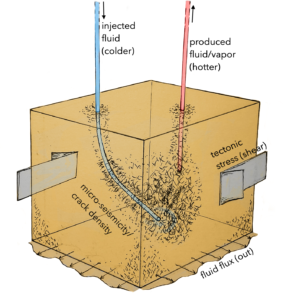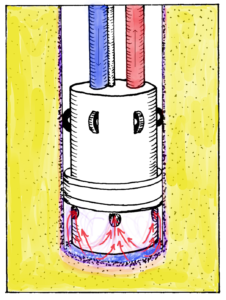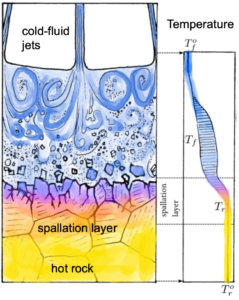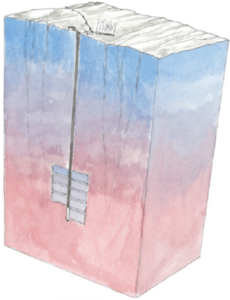Why GO hotter?
advantages of reaching “ultra-hot” geothermal heat sources
The aim of heat mining is to extract thermal energy from the Earth’s crust to generate electricity, as well as for other potential applications. Reaching higher temperatures deeper in the crust has numerous advantages, especially in and beyond the “brittle-ductile transition”, when rocks become increasingly weak and crack less, including:
(1) Large earthquakes are much less likely to occur, greatly reducing public hazard from induced seismicity;
(2) The energy density is much higher, as well as the rates of thermal recharge by local heat flow, improving the outlook for long-term reservoir operation;
(3) The extraction of “supercritical” fluids to the Earth’s surface, a state in between a liquid and a gas, enables turbine generators to be much more efficient than those driven by steam.

Quench spallation drilling (QSD)
Starts operating where mechanical drilling fails, and gets more efficient the deeper you go

“Hydrothermal Spallation” is an existing drilling method that uses jets of hot water to cause cracking as rocks expand as they heat up. Our patent focuses on the opposite condition: Quench Spallation Drilling uses jets of cold water on hot rock to cause the rocks to contract rapidly and form micro-cracks (thermal cracking) that lead to “spalling” off small fragments of rock. Thermal cracking is much more effective during cooling than during heating. Controlling this process constitutes a novel drilling process that can start to work when rocks are above a certain critical temperature, that likely occurs somewhere near the conditions where mechanical drilling fails. Proof-of-concept experiments are needed to quantify this critical temperature and estimate drilling rates and costs.

Cold fluid jets on hot rock surfaces cause micro-cracking and spallation as rocks cool and contract, enabling a novel drilling process for high temperature conditions.
Heat mining system
single-borehole, continuous-growth systems
Our patented geothermal heat mining system is designed without pre-conceptions inherited from standard industry approaches. More information coming soon on this idea.
